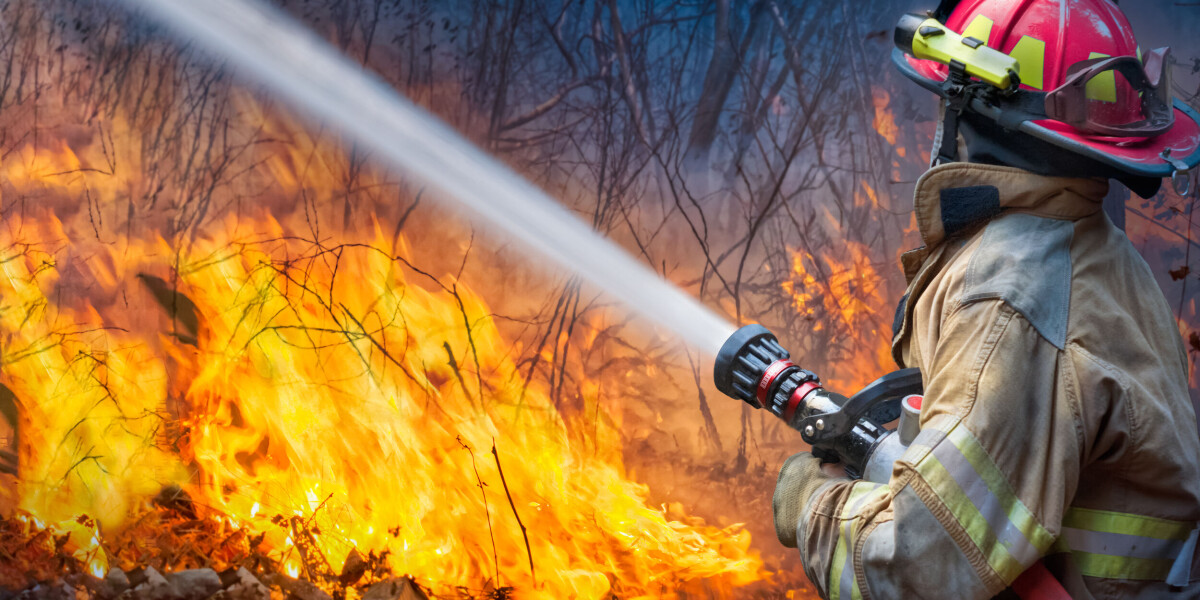
Wildfires in france: less destruction in 2024 but plea for more resources
- Select a language for the TTS:
- UK English Female
- UK English Male
- US English Female
- US English Male
- Australian Female
- Australian Male
- Language selected: (auto detect) - EN
Play all audios:

HEIGHTENED FOREST FIRE WARNINGS REMAIN IN PLACE IN AREAS OF SOUTH More than 4,000 hectares of land have been destroyed by forest fires to date this summer - a third of the total damage
caused in 2023, Interior Minister Gérald Darmanin said yesterday (August 19). He was speaking on a visit to the Hérault department, where two major fires broke out on Sunday. In 2023,
around 12,000 hectares of land was destroyed, much in the south-west. In 2022, a year plagued by intense droughts, 60,000 hectares burned. Firefighters say they desperately need better
equipment - as they are using Canadair planes dating back 30 years in some cases - and for training in areas that were previously not affected by blazes. Read more: Why so few forest fires
this summer in France despite heatwaves? FIREFIGHTERS REMAIN VIGILANT IN HÉRAULT Firefights have remained on site near Frontingan (Hérault), where the weekend’s major fire destroyed over
300 hectares of land. Read more: Wildfires in south of France: 400 hectares burnt, people evacuated Aerial shots of the blaze can be seen below. Heightened forest fire warnings remain in
place as strong Mistral and tramontane winds hit the department. They are expected to last until at least Thursday (August 22). National warning levels can be found through state forecaster
Météo France and its forest fire risk map. Local warnings are given by prefectures, which may include restricting access to certain areas, particularly forested ones. The Hérault
department has placed three areas at ‘very high risk’ of forest fire: the hills of central Hérault, Minervois and Saint-Chinianais, and the wine-growing plain of the cœur d'Hérault and
coastal plains. In addition, access to the Mont Saint-Loup massif, the Pierres Blanches forest, the causse d'Aumelas and the Moure hills, the cirque de Mourèze and Montagne de Liausson
massifs is prohibited. The department has ten mobilisation units in place to respond rapidly to any burgeoning fire. You can read more about both the national forest fire map and local
warnings in our article below. Read more: South of France on high alert for fire, forests closed off CAMPSITE REOPENS AFTER EVACUATIONS The injury toll from the mass evacuation of a
campsite in the Pyrénées-Orientales following a nearby fire has risen to 11. Injuries were caused by people inhaling dangerous fumes and facing panic attacks as they attempted to escape.
Around 3,000 campers were evacuated at 02:30 Monday (August 19) morning, after a fire broke out 100 metres from the Mar Estang campsite. Campers were placed in nearby shelters as
firefighters rushed to tackle the blaze. Two of the 11 injured were firefighters assisting in the evacuation and controlling the fire. The camp has now been opened and people have been able
to return, but a psychological aid unit is in place to help those affected. An inquiry into the cause of the blaze has been opened. FIREFIGHTERS IN DISMAY OVER STATE OF EQUIPMENT
Firefighters across the south of France are doing all they can to put out forest fires, but are increasingly frustrated over the difficulties they face. “The Hérault fire brigade was not in
a position to fight these fires [from the weekend] alone’, said Olivier Richefou, chairman of the national conference of fire and rescue services (CNSIS). Up to 600 firefighters from
across the south of France were deployed, with many coming from nearby units across the department’s borders. “We have a forecasting system that works well thanks… [and] we have good quality
land-based resources,” the chairman told media outlet France3. “But this is no longer enough. Faced with an ever-increasing number of risks, the emergency services also need to increase
their resources.” “We need to train more men and women to intervene... while the fire brigades in the south of France are all trained to fight forest fires, this is not the case in other
areas, which used to be spared these disasters, [but are not anymore],” he added. It is not only the personnel that needs a revamp, said Mr Richefou but also firefighting equipment. This
includes lorries and ground support vehicles, but with forest fires being so large and violent during the summer months, the most critical factor is aerial support. “The situation is
unbearable,” Mr Richefou said, highlighting that some of the planes used to fight fires from above, particularly the Canadair vehicles, are often between 20 and 30 years old. “Pilots are
complaining about poor maintenance. France has ordered two new aircraft… but we have to wait until 2028.”
